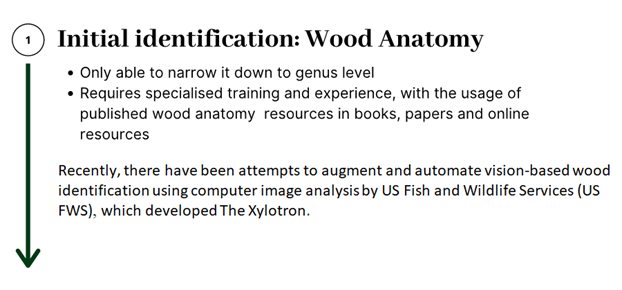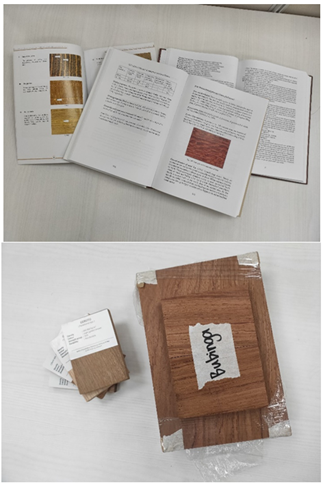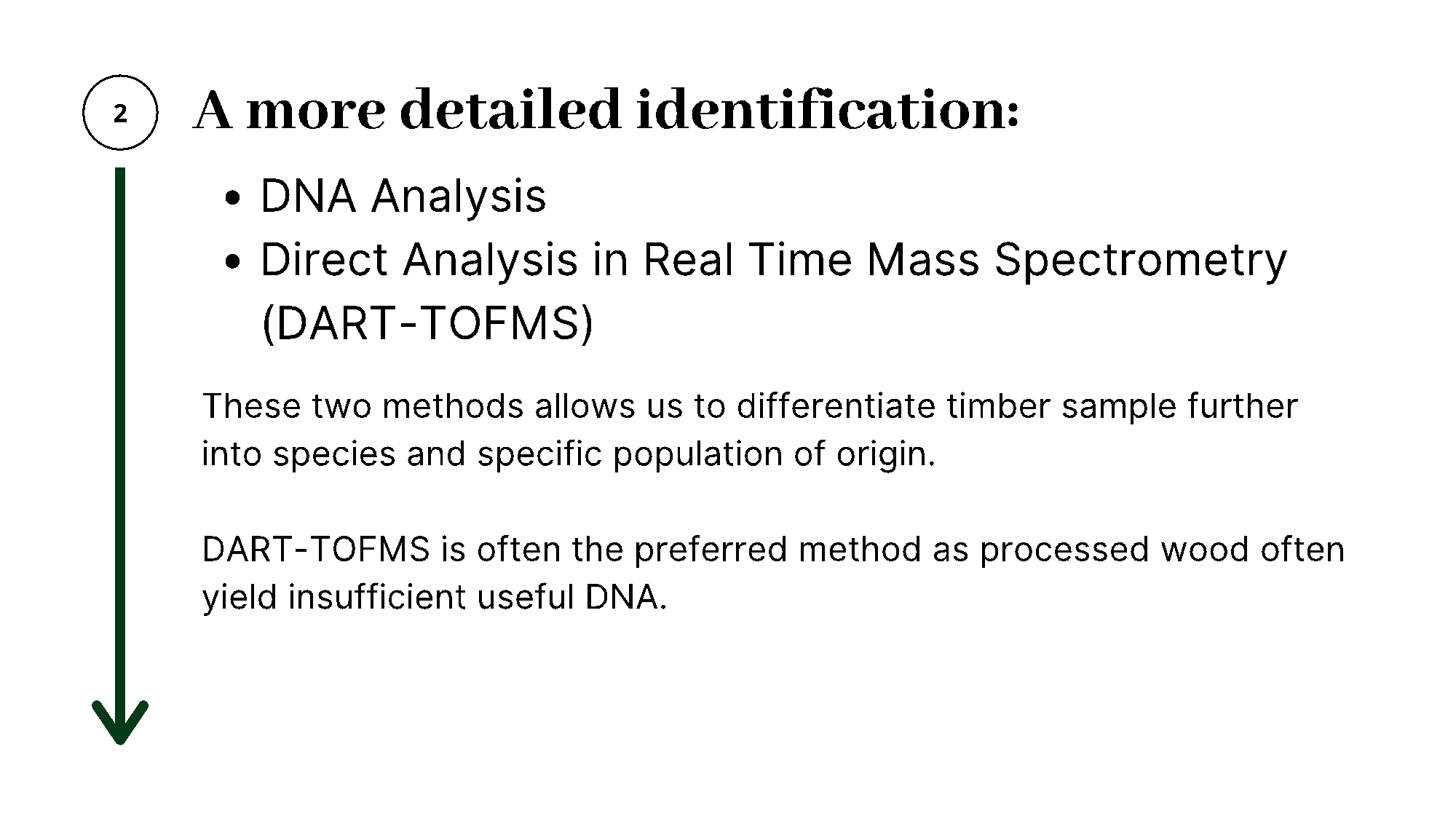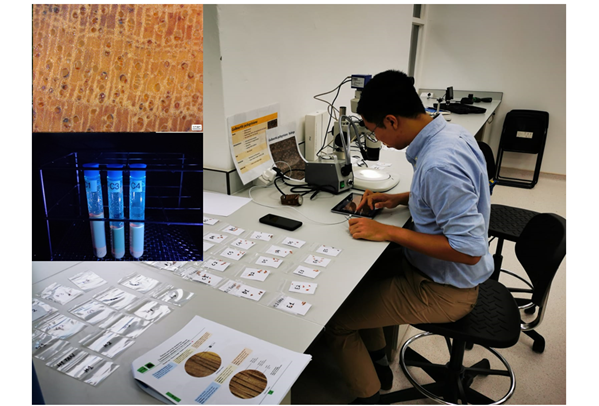Flora Identification and Analysis
The Centre for Wildlife Forensics taps on the extensive reference library of plants from the Singapore Botanic Gardens Herbarium, as well as its links with institutions throughout the world to enable the CWF to identify and extract DNA from plants for accurate identification. This enables us to determine the species being traded and helps to accurately identify possible endangered species that are illegally traded so that enforcement actions can be taken to ensure the long-term conservation of such species.
The Singapore Xylarium – a collection of authenticated timber specimens – will be established to complement the extensive reference library of plants. It comprises a collection of literature on timber identification, timber samples, cross sections of timber samples, and a timber DNA library to facilitate researchers to compare and identify timber specimens through their unique characteristics and genetics. This in-house identification of timber species using a combination of wood morphology, genetics and chemical analysis will enable Singapore to investigate and prosecute the illegal trade in CITES timber more efficiently. We will also be able to share information about the species with international organisations, or the source countries where the illegal timber originates from.
What are the CITES Timber species?
CITES timber species are a subset of the regulated plants, covering only 22 genera and more than 80 species of commercial timber. The rules pertaining to timber species are summarised on the CITES webpage titled "Implementation of the Convention for timber species" (link), while NEPCon publication, “A Practical Guide to CITES” (link), is a good introduction to the intricacies of the framework.
Identification of timber
The identification of timber is called for when there is reason to suspect that an endangered CITES species is passed off as a similar looking but non-CITES species. These species may or may not be closely related, and their exact species would be difficult to determine based on general appearances alone. The timber identification process is as follows:


References like books and paper are often compared against reference collection samples to confirm the identity of wood shipments.

Timber samples are collected and catalogued before being processed and sectioned for identification using microscopic structure of wood).
Note: Some examples of the online wood resources are The InsideWood database or DELTA. More info on The Xylotron.


Wood identification process using wood anatomy and other physical methods like extract fluorescence. (Photo credits: Benjamin Lee and Max Khoo)